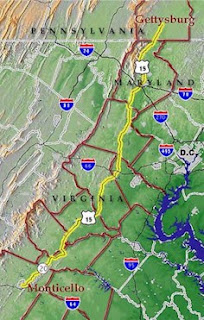Home ownership is a wonderful thing — if you can afford it. Given the lax lending standards the prevailed during the housing bubble, however, a lot of people wound up with houses they couldn’t afford. It’s not just the known expenses like principle and interest payments that kill you, it’s the unanticipated expenses — the rising tax rates, the termite infestations, the fallen branches, the broken furnace, the leaky roof, the broken furnace — that breaks the bank.
Now that housing prices are falling, and people are finding it harder to borrow against their equity to raise cash, foreclosure rates are climbing. Dennis Gartman, a Suffolk resident and author of the Gartman Letter newsletter, has been warning of the consequences of the real estate bubble for quite some time. A friend forwarded this quote from a recent commentary — with scary numbers of foreclosure rates in Hampton Roads — by e-mail:
Last year, even we began to be concerned about real estate prices that were too strong, and were more and more concerned about the over-extended nature of late home buyers who seemed intent upon buying in panic, pushing bids right past the offers on homes that were badly built. Those homes now are a burden, not a joy; they are held by buyers incapable of paying for them, with loans made under circumstances that only a decade or so ago would have been considered ludicrous and “un-bankerly” in nature. But made they were, and now collapsing they are.
We note that here in usually protected, conservative, laid-back southern Virginia the numbers of “seriously troubled loans” on homes are rising at a frightening pace. In Chesapeake, a quintessential suburb, near the Atlantic Ocean and nestled against the N. Carolina border, with quick access to the Outer Banks, foreclosures are up 46% [year over year]. In Norfolk, the navy’s home, and a place that has enjoyed inordinately strong economic growth for years, foreclosures are up 45% vs. a year ago. In Virginia Beach, hard upon the Atlantic Ocean and also facing north into the Chesapeake Bay, they are up 54%… and across Virginia generally foreclosures are up 49%. Thankfully, here in “surprising” Suffolk, foreclosures are actually down [year over year]; but that may only be because of the very small number this year and last and because Suffolk is the fastest growing city in Virginia due to the huge amount of land and the still small population.
“The point here is that even in Virginia the problem of foreclosures is now hard upon us, and that is in an environment where unemployment is at its lowest level in history. What then shall happen when unemployment begins to rise… even slightly. “




